Aug 24, 2022
Beating the Heat in an Idyllic Saitama Landscape
Getting away from the heat in the Kanto was on my agenda this summer. There are cooler regions, such as Nikko or Hakone. But in August when I have a break, I’m reluctant to catch a crowded train for a two-hour journey. So I look to somewhere closer with shady lanes, waterways, and where I can feel the breeze. This time, I settled on a bicycle adventure through a landscape within the Kanto region close to home.
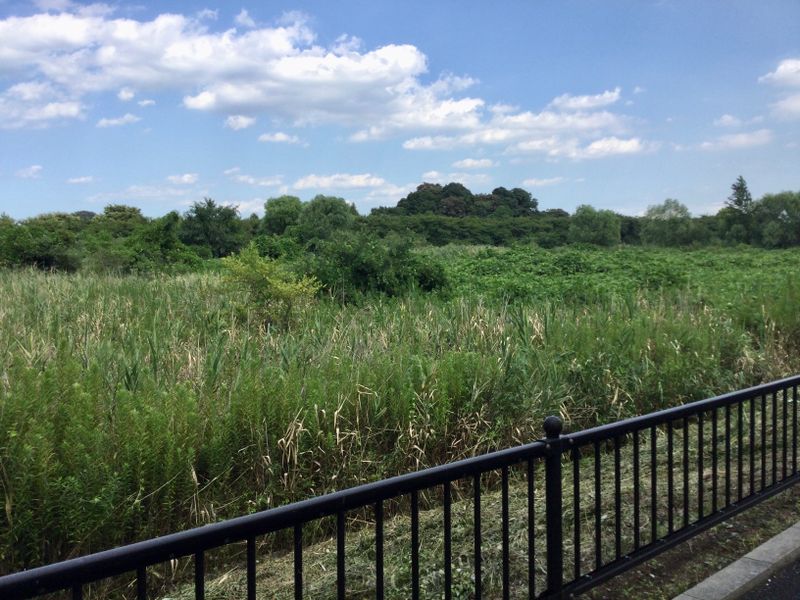
Easy to forget you're in Saitama City with this view of the marshes
Minuma Ward in Saitama City despite being somewhat urban has remnants of a shogun-era land reclamation project, 見沼田んぼ Minuma tanbo, that resulted in vast rice paddies, forests, and satoyama, the marginal areas between human habitation and wild nature.
A little searching online turned up a bicycle rental network with high coverage in Saitama Prefecture, Hello Cycling. I downloaded the app, scouted stations in their network on the northern end of Minuma, and aimed for a location to return the bike in Urawa City at the southern end.
Once I got a kilometer or two south of the Tobu Urban Park Line, suburban Saitama City receded and I aimed for Nanasato General Park which is where 見沼田んぼ Minuma tango begins. It’s startling to discover hundreds of hectares of rural landscape only a few minutes from Saitama City’s hub.
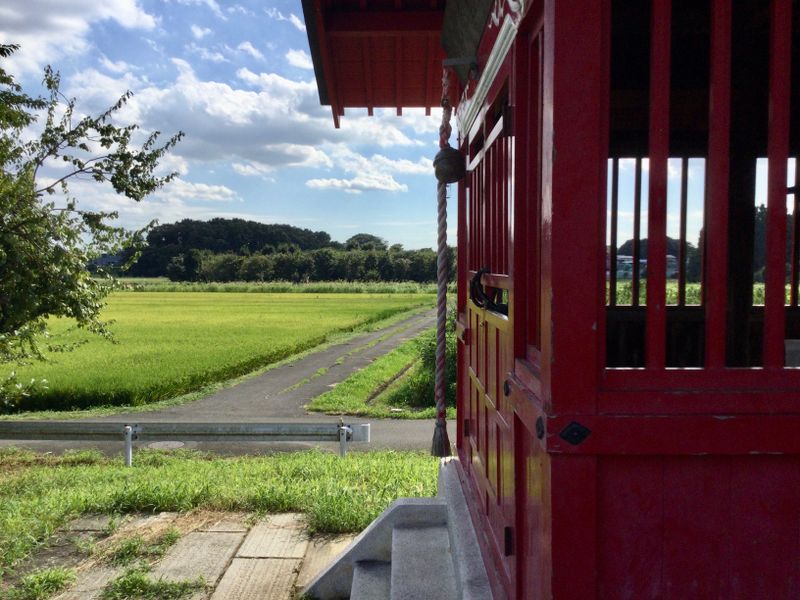
Minuma Benzaiten at the edge of the rice paddies
Here, I caught the breeze wafting over the shallow river valley and cool off in the shade of avenues of trees on the walking and cycling paths along the waterways.
On my route were a few historical and natural landmarks, too. I stopped by the former home of village chiefs, the Former Bando family residence. This restored estate with a thatched roof is surrounded by a thicket of trees. While I was chatting with the guide, a breath of wind blew through the eves and we were momentarily refreshed.
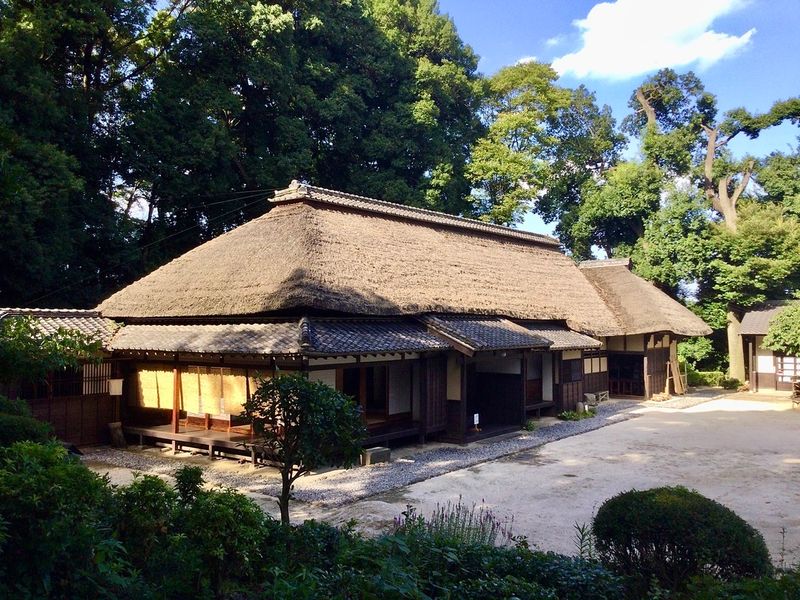
The former Bando Residence
My next stop was the intriguingly named Ryu no Mori, the Dragon’s Forest. Legend has it that, before the land reclamation project in the Edo era, the marsh was the home of dragons. The dragon was disturbed by human encroachment, protesting by causing calamity and sickness. The story goes that the dragon moved on, but modern residents through a conservation initiative protect this forest. It’s well-loved, the gate and signboard decorated with bamboo figures of dragons.
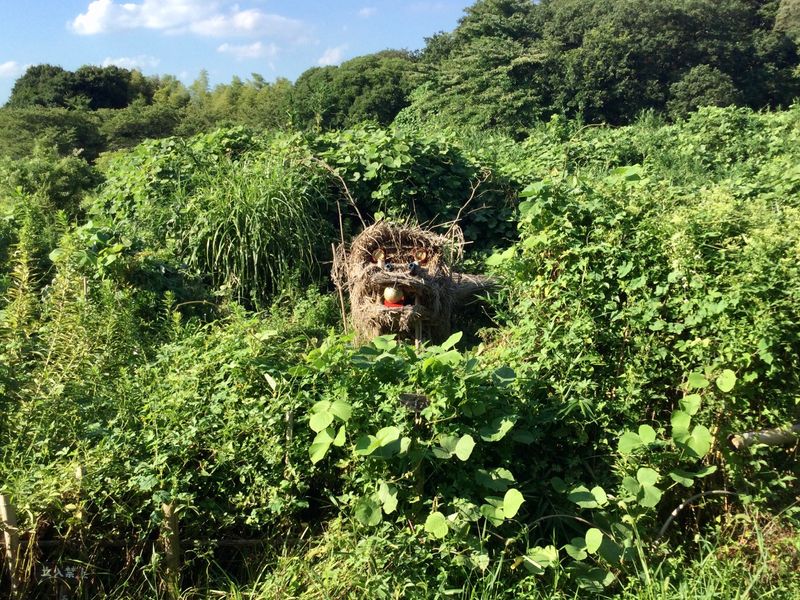
A real dragon!
Beyond the gate is a bamboo thicket that rustles in the breeze. You can’t enter the forest but the surroundings are lush with greenery and the Minuma Daiyosui waterway flowing through it.
My final stop was Urawa for the museum of preserved houses just as it was closing. The late afternoon sun, the light breeze, and the cool of the verandas of the classic houses made it a great spot to imagine how the people of a bygone era endured the summer heat.
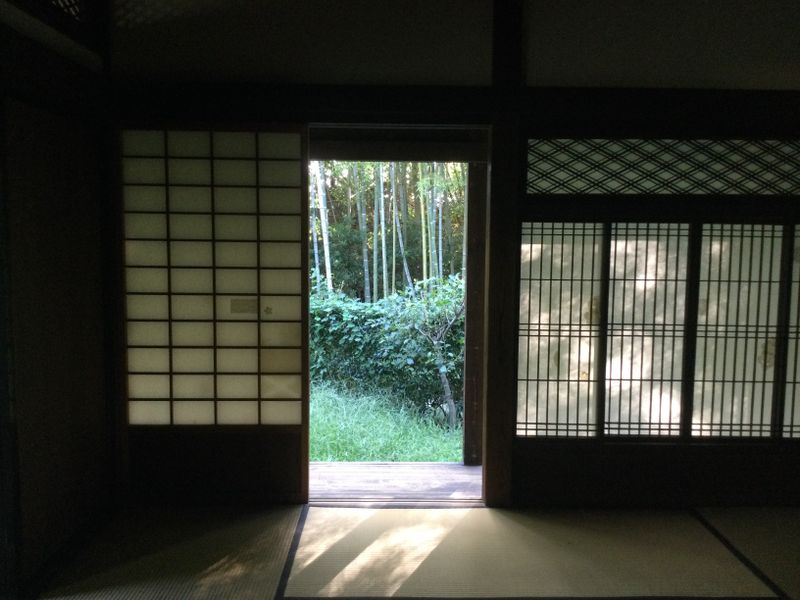
Noguchi Residence at the Urawa Museum
And by the time I got to the closest station in Urawa City to return the bike, I felt relaxed and refreshed. I relished the late afternoon sun at the end of an August day.



0 Comments